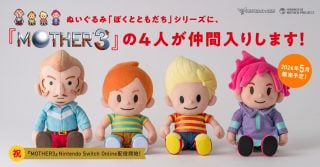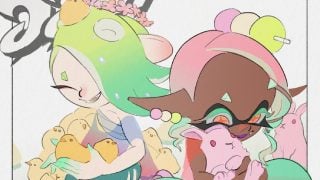Plenty of games in the Legend of Zelda series are divisive, but none seem more-so than 2011’s Skyward Sword. It brought motion controls to the forefront, focused on narrative more than ever, and detailed the beginnings of the Zelda timeline as we know it.
Now, despite five years having passed, Link’s sky-bound adventure is as debated as ever. What did it do right, and what could be better?
Waving away the waggle
To better appreciate what Skyward Sword was trying to do in terms of gameplay you have to look back at its immediate predecessor.
Twilight Princess wasn’t originally planned for a Wii release, but the dwindling sales of the Gamecube gave Nintendo a reason to port it over as a launch title. As a result, expectations soared. After all, we’d be getting a game where you could swing the iconic Master Sword in real time! It was a childhood fantasy come true.
Unfortunately, due to various technical limitations with both the Wii Remote and the original game’s mechanics, the game could only register vertical and horizontal swings. In the end, the Wii version was little more than a wide-screen mirrored port of the Gamecube original with what was quickly deemed “waggle” controls, and, regardless of the game’s overall quality, many were understandably disappointed by this lackluster initial foray into motion controlled Zelda.

Fast forward a few years and Skyward Sword was pitched as the real deal, with the Wii Motion Plus allowing 1-to-1 sword fights where the slightest movement of your wrist would be recreated on screen. You could slice enemies precisely and various other items and minigames would take advantage of the device’s increased fidelity.
Whether you enjoy these motion controls is entirely subjective; some thought it was an immersive and enjoyable experience, others thought it was tiresome and plagued with technical issues. Personally I think they added a whole new depth to the combat and calibration was easy enough to remedy most problems, but I won’t be missing them in Breath of the Wild.
The birth of Hyrule
Skyward Sword is potentially the most significant game in the franchise when it comes to the overarching lore; the only other game that comes close is Ocarina of Time. Taking place in an era before the foundation of Hyrule, where its ancestors populated the skies after fleeing the terrors tormenting the lands below, the story of Skyward Sword lets players experience the origins of several iconic items, themes and characters.
Whereas Ocarina of Time gave us a vague retelling of the creation of the world at the hands of the three Goddesses, Skyward Sword delves even deeper into this collection of deities. It turns out there was a fourth Goddess in the form of Hylia, who was entrusted with the Triforce after the former three left the mortal realm. This alone throws some added complexities to the already established mythos, and the late-game reveal that Hylia’s bloodline forms the basis of the Zelda lineage just takes it even further.

Similarly, the introduction of Demise and his curse, which leads to the cyclical rebirth of Link, Zelda and Ganondorf, answered one of the franchise’s lingering mysteries. Unfortunately this came at the cost of Demise’s character development, as he appears very late and barely gets a chance to come into his own. His servant, the delightfully bizarre and creepy Ghirahim, takes up the villainous mantle for much of the game in his stead.
While some loved that we finally got answers to decades old questions, others are understandably disappointed. After all, by pulling back the curtain Nintendo has removed much of the franchise’s mystery. What else is there to theorize with so many questions answered?
Hey, listen?
Naturally, given the name, Skyward Sword sheds light on the origins of the Master Sword, but in a surprise twist the Blade of Evil’s Bane was, and to an extent still is, possessed by an artificial intelligence of sorts named Fi.
Fi is one of the most controversial parts of Skyward Sword, mostly due to her almost constant guidance. While companion characters stating the obvious was nothing new (Navi is infamous for a reason), Fi takes it to a whole other level. Throughout the adventure she frequently pops up to guide the player on their way, even if the path is clear. Good luck if you have low batteries too, as Fi will be sure to stop everything to inform you, despite a notification already being clearly visible on-screen the entire time.

These annoying interruptions end up being detrimental to Skyward Sword’s story, as it’s clear the writers wanted players to forge a connection with Fi during their shared journey. Towards the end of the game she really comes into her own and develops a personality, which culminates in what I’d argue is the franchise’s most emotional scene. Many players at that point could be sick of Fi by then, though, thanks to her role in the hand-holding gameplay mechanics, ruining the moment.
Thankfully the other major characters in the game are much more consistent and effective. Skyward Sword’s interpretation of Zelda, for example, is one of the best we’ve seen yet. Far from a damsel in distress, Zelda stands up to bullies, traverses the dangerous surface world alone for a while and doesn’t hesitate when it comes to accepting her destiny. She’s also a far cry from the serenely graceful figure we’ve seen in other titles; instead she has a more bubbly personality in-keeping with her more humble lifestyle when the game begins.

It’s also worth noting that Skyward Sword shows Zelda developing what is the most obviously romantic connection with Link outside of Zelda 2’s curtained kiss, with her “I’m still your Zelda” line tugging more than a few heartstrings.
Series stalwart Impa also makes an appearance and immediately makes an impression; calling Link out on his tardiness and testing his resolve rather than accepting him as the Chosen Hero without clear evidence.
And you can’t talk about standout characters in Skyward Sword without mentioning the big man himself: Groose. The leader of the aforementioned bullies, Groose starts as a typical high school jock but over the course of the game he learns and develops more than anyone else, eventually becoming one of its most endearing stars. It’s still a tragedy he hasn’t popped up in Hyrule Warriors yet.
It’s a small world
One of Skyward Sword’s more controversial shifts was towards focused, linear areas filled to the brim with goodies and puzzles, a stark contrast to the wide open maps dotted with dungeons that made up previous games. Now, almost every region on the surface world felt like a slightly more open dungeon, with exploration gated at every turn.
This more claustrophobic atmosphere could have been remedied by the sky exploration which links these areas together, but, despite taking inspiration from Wind Waker and its myriad islands, there is very little to see and do above the clouds. Only two settlements really exist – Skyloft and the Lumpy Pumpkin – and barely a handful of the other islands are inhabited at all.

Thankfully, what settlements do exist are at least populated by one of the most memorable casts in Zelda history. Taking a page from Majora’s Mask, almost every NPC has their own troubles to deal with, and you are encouraged to help them in exchange for Gratitude Crystals, which unlock helpful items. These side quests are where Skyward Sword shines brightest, in my opinion, thanks to a combination of clever writing and a brief experimentation with RPG dialogue choice mechanics.
Speaking of RPGs, Skyward Sword dabbles in the genre even further with its equipment mechanics. Link can upgrade various items with loot dropped from enemies, granting him new equipment like a triple-pellet slingshot, a wider net for bug catching, and self-repairing shields. Not only that but there are multiple medals that can be equipped to boost health, increase drop chances, and even make potions more effective. These elements aren’t fleshed out significantly, but they provide an extra incentive to exploring areas and defeating monsters beyond the typical rupee farming.
Looking forward
All in all, Skyward Sword was an attempt by Nintendo to celebrate the history of Zelda while shaking up its core foundations. With all of the changes it implemented, its divisive status is no surprise.
Personally, I think it’s a fun experiment; not all of the parts work, but seeing a Zelda game attempt things like equipment systems, greater narrative beats and dynamic combat made for a diversion the franchise sorely needed after the somewhat by-the-numbers Twilight Princess.
Will future Zelda titles be inspired by Skyward Sword, despite its divisiveness? Breath of the Wild looks to be taking its RPG-styled mechanics to their logical end point, while the cinematic story seems to be intact, albeit in a much more open world.
The bigger question is whether or not its story repercussions will be felt. The Link, Zelda and Ganondorf cycle has been given an origin point, a fourth Goddess now exists, and the Master Sword is, and always has been, possessed by Fi to some degree.

The future of the Legend of Zelda has been undeniably changed by Skyward Sword, but we’ll just have to wait and see just what that means for any future legends.
This article is part of our new Zelda look-back series running up to the release of Breath of the Wild. This article was previously run as part of our Year of Zelda series last year, which was shelved after the new entry was delayed.
Leave a Comment


